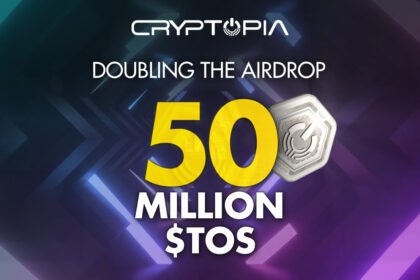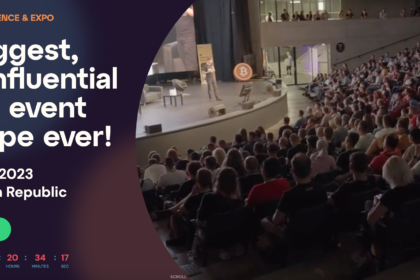Overview of the Current Crypto Market Landscape
The cryptocurrency market has experienced a marked evolution throughout 2023, characterized by increased volatility and shifting investor sentiments. As of late 2023, the total market capitalization of crypto assets has witnessed significant fluctuations, often correlating with global economic conditions, regulatory developments, and technological advancements in the blockchain sector. Key cryptocurrencies, including Bitcoin and Ethereum, have shown a mixture of price stability and dramatic swings, reflecting broader trends in investor behavior.
In addition to traditional assets, newer tokens have emerged, driven particularly by the burgeoning interest in decentralized finance (DeFi) and non-fungible tokens (NFTs). These innovations are not only influencing the crypto market dynamics but are also paving the way for Web3 gaming to thrive. The interplay between gaming and cryptocurrency has attracted substantial attention from both gamers and investors, creating a fertile ground for Web3 projects. This convergence is changing how users engage with digital assets, expanding the appeal of cryptocurrencies beyond mere investment instruments.
Furthermore, regulatory scrutiny has intensified against the backdrop of the shifting crypto landscape. Governments worldwide are increasingly focusing on establishing clearer frameworks for cryptocurrency usage, which can either encourage or constrain market growth. Regulatory developments, particularly concerning taxation and compliance, will likely play a crucial role in shaping investor confidence in crypto assets and their application in sectors like Web3 gaming. The introduction of more comprehensive regulations could reassure prospective users, fostering a more robust ecosystem for crypto-enabled gaming applications.
This combination of market trends, regulatory changes, and technological advancements indicates that the cryptocurrency market is at a pivotal juncture. As stakeholders monitor these developments, the future of Web3 gaming remains inextricably tied to the evolution of the crypto landscape, underscoring the necessity for ongoing analysis and engagement in both sectors.
The Rise of Web3 Gaming: What It Is and Why It Matters
Web3 gaming represents a significant evolution in the gaming industry, fundamentally altering how games are developed, played, and monetized. At its core, Web3 gaming leverages blockchain technology to create decentralized ecosystems, where players gain true ownership over their in-game assets. This transformative approach contrasts sharply with traditional gaming models, where players typically have limited control and ownership rights over purchased items and digital assets.
One of the defining principles of Web3 gaming is decentralization. Unlike conventional games that are governed by a single entity, Web3 games operate on decentralized networks, allowing players to participate in decision-making processes and governance mechanisms. This shift empowers individuals within the community, as players can vote on game developments and propose changes collaboratively, fostering a sense of ownership and engagement that is often lacking in traditional settings.
Player ownership is another significant aspect of Web3 gaming. Through the use of non-fungible tokens (NFTs), players can truly own their in-game assets, ranging from characters to skins and weapons. These assets can be bought, sold, or traded freely on various marketplaces, providing opportunities for players to earn real-world value from their gameplay. This model incentivizes players to invest time and effort into their gaming experience, as they stand to gain financially in a way that traditional games rarely offer.
Moreover, the interactivity and community engagement in Web3 gaming sets it apart. Players are often involved in creating content, devising new gaming experiences, and influencing the game’s direction through the use of decentralized autonomous organizations (DAOs). Notable projects such as Axie Infinity and Decentraland have showcased the potential and appeal of this innovative approach, blending gaming with financial opportunities in the ever-evolving crypto market. As the gaming industry continues to embrace these principles, Web3 gaming is poised to revolutionize the way players and developers interact within the gaming landscape.
Challenges Facing Web3 Gaming Amid Crypto Market Volatility
The Web3 gaming sector finds itself at a crossroads, heavily influenced by the inherent volatility of the crypto market. One of the foremost challenges is the fluctuating value of in-game assets tied to cryptocurrencies. Players often invest significant amounts of money into their gaming experiences, purchasing NFTs or other digital assets. When the value of these assets experiences dramatic swings, it can lead to player dissatisfaction and reluctance to invest further. The unpredictability may discourage newcomers from engaging with Web3 gaming, as the perceived risks outweigh the benefits, affecting the overall ecosystem.
Moreover, potential regulatory hurdles pose another significant challenge. Governments around the world are still grappling with how to regulate cryptocurrencies and digital assets. As regulators establish frameworks, Web3 gaming could be impacted in various ways, ranging from taxation issues to restrictions on asset trading. These regulations may potentially stifle innovation and deter developers who are often apprehensive about entering a space beset by compliance uncertainties. Consequently, this complexity may hinder the rapid evolution of Web3 gaming, which relies on a supportive framework for sustainable growth.
Mainstream adoption remains a critical obstacle as well. While the idea of integrating gaming with blockchain technology is enticing, many traditional gamers are resistant to embracing the Web3 gaming environment. Concerns regarding security, usability, and the complexity of blockchain transactions can alienate potential users. This hesitance is compounded by the crypto market’s volatility, which contributes to a perception of unreliability. Developers and investors may become increasingly wary of committing resources to a sector that lacks stability, thereby influencing the overall growth trajectory of the Web3 gaming industry.
The Road Ahead: Opportunities for Growth in Web3 Gaming
The landscape of Web3 gaming is rapidly evolving, driven by advancements in blockchain technology and the integration of crypto within gaming ecosystems. As the crypto market continues to stabilize, this sector presents numerous opportunities for growth that can redefine gaming experiences. One notable trend is the rise of community-driven funding mechanisms, where players and investors alike contribute to games’ development through decentralized finance (DeFi) platforms. This participatory approach not only fosters a sense of ownership among players but also aligns financial incentives with gameplay, which can enhance player engagement and retention.
Moreover, innovative gameplay mechanics that leverage blockchain capabilities are emerging. These include play-to-earn models, where players can earn crypto assets as they progress in games. This model has the potential to attract a diverse audience, including those traditionally disinterested in gaming, thereby expanding the market. Additionally, the introduction of unique in-game economies can drive transactions and engagement within the crypto ecosystem, solidifying the interdependence between gaming and the crypto market.
Partnerships with established gaming companies are another avenue for growth. By collaborating with traditional game developers, Web3 gaming platforms can leverage existing expertise and audience reach while integrating crypto functionalities seamlessly. Such partnerships can legitimate Web3 gaming, making it more appealing to mainstream gamers. However, it is essential to recognize the risks associated with this growth. Regulatory challenges, market volatility, and technological barriers must be addressed to ensure the sustainable advancement of Web3 gaming. By implementing robust risk mitigation strategies, including transparent tokenomics and compliance measures, the industry can build a resilient framework for future growth.
Overall, as the crypto market matures, the potential for Web3 gaming to thrive is significant. By embracing innovative models, forging strategic partnerships, and focusing on community involvement, the sector stands poised for a transformative future.









